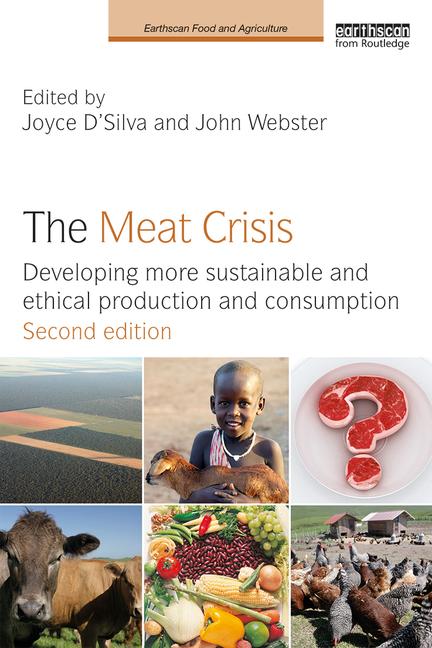Americans to eat 1.23 billion chicken wings during Super Bowl weekend

Chicken wings have become a staple food of Super Bowl parties in the U.S., and demand for them on menus is now at an all-time high leading up to the second biggest eating day of the year – Super Bowl Sunday.
Super Bowl weekend is unquestionably the biggest time of the year for wings. According to the National Chicken Council's 2013 Wing Report, more than 1.23 billion wing portions will be consumed during Super Bowl weekend in 2013, as fans watch the San Francisco 49ers and the Baltimore Ravens battle for the Lombardi Trophy.
To put that into perspective, if 1.23 billion wing segments were laid end to end, they would stretch from Candlestick Park in San Francisco to M&T Bank Stadium in Baltimore… 27 times.
Super Bowl wing consumption is down about one percent, or 12.3 million wings, compared to last year's numbers, but not because demand for them is declining. Quite the opposite, explains Bill Roenigk, chief economist and market analyst at the Washington, D.C.-based National Chicken Council.
"Chicken companies produced about one percent fewer birds last year, due in large part to record high corn and feed prices," Roenigk said. "Corn makes up more than two-thirds of chicken feed and corn prices hit an all-time high in 2012, due to two reasons: last summer's drought and pressure from a federal government requirement that mandates 40 percent of our corn crop be turned into fuel in the form of ethanol. Simply put, less corn equals higher feed costs, which means fewer birds produced."
Data shows that nearly four in five U.S. adults (79 percent) eat chicken wings and that consumption does not vary significantly by region or gender. Women (77 percent) are just as likely as men (82 percent) to roll up their sleeves, break out the wet naps and eat a few wings.
"The data show that chicken wings are not bound by gender or geographic lines," added the council's Roenigk. "We also know that they are nonpartisan and politically independent. That is, there are really no extreme left wings or extreme right wings."
The vast majority of wings, especially those destined for restaurants, are disjointed, with the third joint (the thin part known as the flapper) being exported to Asian countries and the meatier first and second joints being sold domestically. The wing is usually split into two parts – or portions or segments – known as the "drumette" and the mid-section or "flat" and sold to restaurants or retail grocery outlets.
A chicken has two wings, and chicken companies are not able to produce wings without the rest of the chicken. Therefore, the supply of wings is limited by the total number of chickens produced. When the demand for wings is stronger than the demand for other chicken parts, the price of wings will go up, as it has this past year.
The wholesale price of wings will be the most expensive ever during Super Bowl XLVII as demand rises and the supply has shrunk. Wings are also currently the highest priced part of the chicken. Wholesale wings are currently at about $2.11 a pound (Northeast), the highest on record at the U.S. Department of Agriculture, up 22 cents or 12 percent from a year earlier.
Wing prices always go up in the fourth quarter of the year as restaurants stock up for the Super Bowl and prices usually peak in January during the run-up to the big game. But many analysts expect that demand will hold steady even after the NFL season ends.
"Demand for wings is proving more and more to be inelastic," Roenigk added. "With the rising number of restaurants with menus dedicated to wings, the return of the NHL hockey season, the NCAA March Madness basketball tournament and then the start of grilling season, wing demand should remain hot."
But Roenigk adds that consumers shouldn't worry about any shortage of wings on Super Bowl Sunday or any time soon.
"The good news for consumers is that restaurants plan well in advance to ensure they have plenty of wings for the big game," he said. "And some restaurants are promoting boneless wings and some are offering flexible serving sizes. But if you're planning to cook your own wings, I wouldn't advise being in line at the supermarket two hours before kickoff."
According to Nielsen Perishables Group FreshFacts data, both fresh and prepared wings totaled $1.6 billion in sales for the 52 weeks ending November 24, 2012, an increase of 5.4 percent compared to a year earlier.
Wing sales at grocery stores and supermarkets spike dramatically the week of the Super Bowl, but the data show that consumers also stock up the week before, too.
Originally on and off various fast-food menus, chicken wings have become a staple of casual dining and pizza places. Virtually every casual dining chain offers chicken wings as an appetizer, if not also as an entrée.
Increasingly, ready-to-eat or heat-and-eat wings are showing up in the delicatessen and prepared foods section of supermarkets, a growing trend.
"Orders at carry-outs and restaurants for chicken wings on Super Bowl Sunday will increase more on that day than any other winter Sunday - a 156 percent increase," said Harry Balzer, vice president of the NPD Group, a market research firm.
Chicken is a very popular dish overall on that day… and it's not just wings. According to NPD Group data, chicken strips will also be up 43 percent over a typical winter Sunday and orders for fried chicken on the bone will be up 33 percent.
Wingstop, a Texas-based restaurant franchise with 550 locations, is prepping for the biggest day of the year when they expect to sauce and toss more than six million wings at restaurants across the country. Wingstop expects Super Sunday business to be up 15 percent over last year, and if Wingstop reaches its goal this will be the 13th straight year the company has set a big game sales record.
"The Super Bowl is the second biggest eating holiday of the year, after Thanksgiving. With the growing demand for wings, we are gearing up for this to be our biggest year yet," said Charlie Morrison, Wingstop president and CEO.
Although America's taste for chicken wings is no hotter than during Super Bowl weekend, the National Chicken Council estimates that overall in 2013 more than 13.25 billion chicken wings, about three billion pounds, will be marketed as wings (as opposed to the wings on a whole chicken, for example). The actual number of wing portions sold is estimated to be 26.5 billion because, as noted above, the vast majority of wings are cut into two segments or portions. This is about a two-percent decrease from 2012, reflecting chicken production estimates for 2013.
This survey was conducted online within the United States by Harris Interactive on behalf of the National Chicken Council from January 14-16, 2013 among 2,050 adults ages 18 and older, of whom, 1,586 eat chicken wings. This online survey is not based on a probability sample and therefore no estimate of theoretical sampling error can be calculated. For complete survey methodology, including weighting variables, please contact Tom Super at tsuper@chickenusa.org.
Source: National Chicken Council
Looking for a reprint of this article?
From high-res PDFs to custom plaques, order your copy today!






